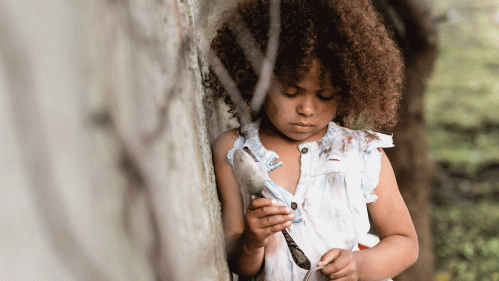Safer Neighborhoods May Mitigate Risk of Child Abuse

Researchers have long suspected that neighborhoods can be a source of risk or protection for child well-being. A new Rutgers study supports this assumption and finds that when parents feel higher levels of stress or hopelessness about their surroundings, they may have a more difficult time caring for their children.
“To get the best outcomes for kids and to elicit the best parenting, families need a safe, stable, stimulating environment, both at home and in the surrounding community,” said Katherine Marcal, an assistant professor at the Rutgers School of Social Work and coauthor of the study published in the journal Child Abuse & Neglect.
“But if you live in a neighborhood where you can’t go outside, can’t go to a park or can’t walk down the sidewalk because there are drug dealers or trash, then families are cooped up in stressful conditions. This stress can make maltreatment more likely to occur.”
Most previous work has focused only on residents’ views of neighborhood quality and safety. By examining both parent and outsider perspectives, the researchers were able to substantiate a link between neighborhood disorder and child maltreatment.
Using data from the Future of Families and Child Wellbeing Study, a longitudinal birth cohort study of children born in large United States cities between 1998 and 2000, Marcal and colleagues sought to assess the link between neighborhood conditions at child age 3 and child maltreatment at age 5.
As part of the well-being study, mothers reported on how often they encountered drug activity, gang violence and other dangerous elements in their community. Answers ranged from “never” to “frequently.” In the same study, outsiders recorded physical qualities such as vacant buildings, abandoned cars, trash and other signs of physical deterioration in the neighborhoods where mothers lived.
Marcal and her colleagues then assessed the relationship between these neighborhood factors with subsequent child maltreatment behaviors.
The researchers found that resident and outsider perceptions of neighborhood disorder were independently related to the likelihood of physical abuse. Additionally, resident perceptions of neighborhood disorder were associated with greater likelihood of psychological abuse.
The findings have significant implications for child welfare strategies, Marcal said. Improving the built environment, reducing poverty and providing adequate housing and housing services could help reduce maltreatment risks in low-income communities, the researchers wrote.
“We’re definitely gaining a better understanding of how stress and hardship affects behaviors,” said Marcal. “Child abuse isn't just a simple matter of bad people being bad parents.”


